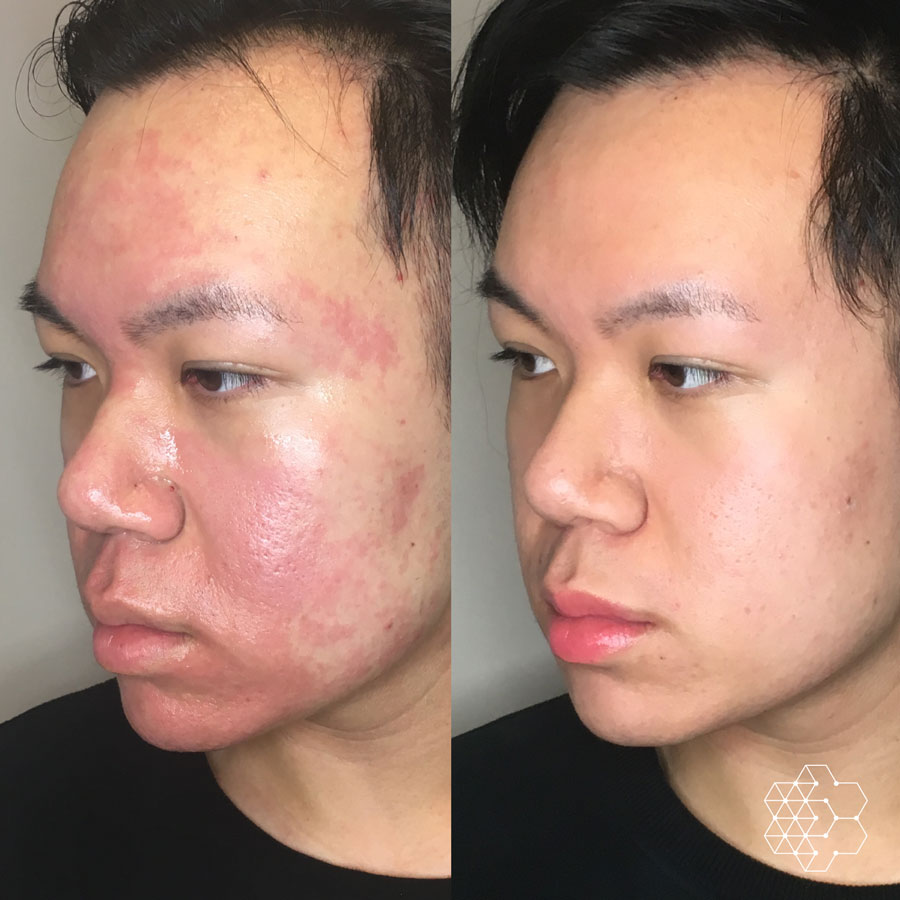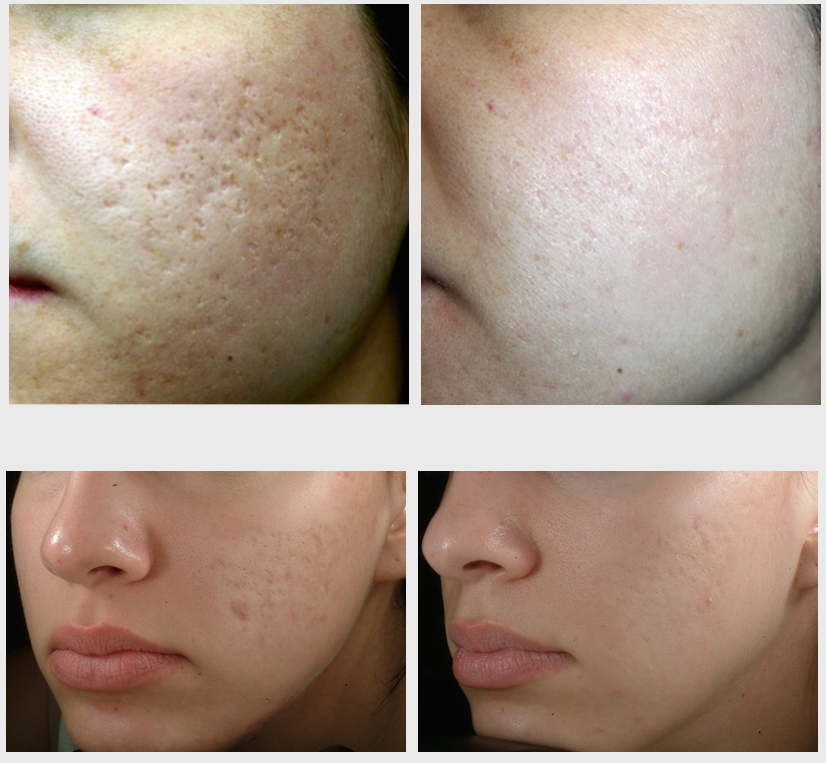Discovering Skin Conditions: Determining and Dealing With Acne Scars for Healthier Skin
Acne scars stand for a substantial worry for individuals looking for to maintain healthy skin, as they can impact both look and self-esteem. Understanding the different kinds of scars, from atrophic to hypertrophic, is important for figuring out proper treatment alternatives. While expert interventions like chemical peels and microneedling can be reliable, the value of customized care strategies can not be overstated. Preventative steps play a crucial duty in lessening future scarring. As we discover these aspects, one should consider just how the right method can cause transformative outcomes.
Understanding Acne Scars
Recognizing acne scars is important for any person who has experienced serious acne, as these marks can have a long-term impact on both physical look and emotional health. Acne scars develop when the skin undertakes inflammatory responses during active acne sores. The extent of scarring is frequently influenced by aspects such as the sort of acne, its period, and specific skin characteristics.
The body's natural healing process can result in either atrophic scars, which look like anxieties in the skin, or hypertrophic marks, which are elevated and arise from overflow of collagen. In addition, the emotional toll of acne marks should not be underestimated; numerous individuals report feelings of embarrassment, anxiety, and lowered self-esteem. This emotional concern can affect social interactions and overall quality of life.
Dealing with acne scars needs a detailed understanding of their development and effect. Understanding of the capacity for long-term consequences associated with neglected scars can motivate individuals to look for proper therapies. Early intervention and effective management approaches can dramatically boost skin look and improve emotional strength, highlighting the value of recognizing the complexities surrounding acne marks.
Types of Acne Scars
Acne marks can be categorized right into distinctive kinds, each exhibiting unique features and needing specific therapy methods. The primary kinds of acne scars consist of atrophic, hypertrophic, and keloid scars.

Hypertrophic marks, on the other hand, are increased over the skin level and are the result of extreme collagen manufacturing throughout the healing procedure. They generally continue to be within the boundaries of the initial acne sore. Keloid marks are similar however expand beyond the initial injury site, forming larger, increased locations that can be painful or itchy.
Comprehending these sorts of marks is important for choosing suitable treatment choices. Various marks might react much better to specific therapies, such as laser treatments, fillers, or medical treatments, highlighting the value of a customized technique to acne mark administration.
Determining Your Scars
Acne marks normally fall right into two categories: hypertrophic and atrophic scars. These can better be categorized into ice-pick marks, boxcar scars, and rolling marks, each displaying distinct features and needing various techniques for assessment - acne scars.
Hypertrophic marks, on the other hand, are elevated and happen due to extreme collagen production throughout the healing process. Identifying the particular attributes of your scars-- such as width, structure, and depth-- is important for correct identification. Furthermore, take into consideration the distribution of marks throughout your skin, as this can indicate the intensity and period of the acne condition.
Engaging with a skin doctor her comment is here can offer useful understandings into the nature of your marks, aiding in the distinction in between different types. A detailed understanding of your marks will inevitably lead to a more tailored and reliable therapy plan, ensuring a more clear and healthier skin tone.
Therapy Alternatives Available
Identifying the particular kind of acne marks existing on your skin prepares for exploring effective treatment choices. Typical kinds of acne marks consist of Read Full Report atrophic (clinically depressed), hypertrophic (elevated), and post-inflammatory erythema.
For atrophic marks, alternatives such as chemical peels, microneedling, and laser resurfacing are extensively utilized. Chemical peels off use acids to eliminate the outer layer of skin, promoting brand-new cell development.
Hypertrophic marks can be treated with corticosteroid shots to flatten the scar or laser treatment to lower soreness and boost look. acne scars treatment. Silicone gel sheets and stress dressings may likewise assist in managing raised marks
Additionally, facial fillers can briefly fill up in depressions from atrophic marks, while medical excision may be appropriate for extreme instances. Each treatment option has its considerations and advantages, making it vital to speak with a skin specialist. They can offer personalized referrals based on the type and severity of your scars, along with your skin type and overall wellness.
Tips for Prevention
Reliable avoidance methods can considerably reduce the chance of establishing acne scars. The initial step is to keep a consistent skin care regimen that includes gentle cleansing, exfoliation, and hydrating. Utilizing non-comedogenic items aids protect against stopped up pores, which can exacerbate acne. Furthermore, incorporating topical therapies including salicylic acid or benzoyl peroxide can properly handle outbreaks and minimize swelling.
Staying clear of need to pop or choose acne sores is crucial, as this can cause click now much deeper skin damages and increase the risk of scarring. Instead, think about making use of a cool compress or over-the-counter treatments to minimize swelling and inflammation.
Sunlight protection is one more essential element of avoidance; ultraviolet (UV) rays can dim scars and prevent the healing procedure. Using a broad-spectrum sun block with at the very least SPF 30 daily can shield the skin and advertise even recovery.
Last but not least, preserving a balanced diet plan rich in anti-oxidants, vitamins, and minerals sustains skin health and recovery. Staying moisturized and handling stress and anxiety degrees can likewise play a considerable role in reducing acne flare-ups. By executing these techniques, people can substantially lessen their opportunities of developing acne scars.

Final Thought
Finally, understanding and identifying acne marks is vital for effective treatment and accomplishing healthier skin. Various sorts of acne marks, consisting of hypertrophic and atrophic marks, demand specific interventions customized to individual needs. Therapy choices array from chemical peels and microneedling to corticosteroid shots, highlighting the significance of seeking advice from a skin doctor. Furthermore, taking on a mild skincare routine and shielding the skin from UV direct exposure can dramatically contribute to the avoidance of further scarring and overall skin health and wellness.
The body's all-natural recovery process can result in either atrophic marks, which show up as depressions in the skin, or hypertrophic marks, which are raised and result from overflow of collagen. They are further split right into 3 subtypes: ice choice marks, boxcar scars, and rolling scars. Acne scars normally fall into 2 classifications: atrophic and hypertrophic scars. These can even more be categorized right into ice-pick scars, boxcar scars, and rolling marks, each exhibiting unique qualities and needing various techniques for evaluation.
Different kinds of acne scars, consisting of atrophic and hypertrophic scars, necessitate specific treatments tailored to individual needs.